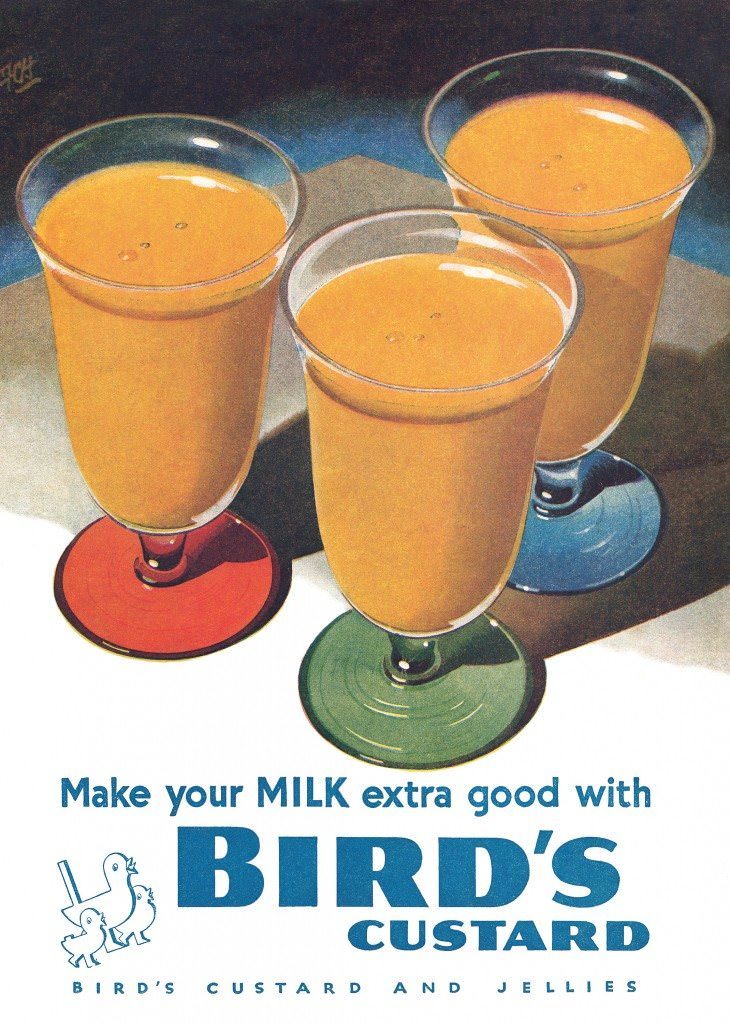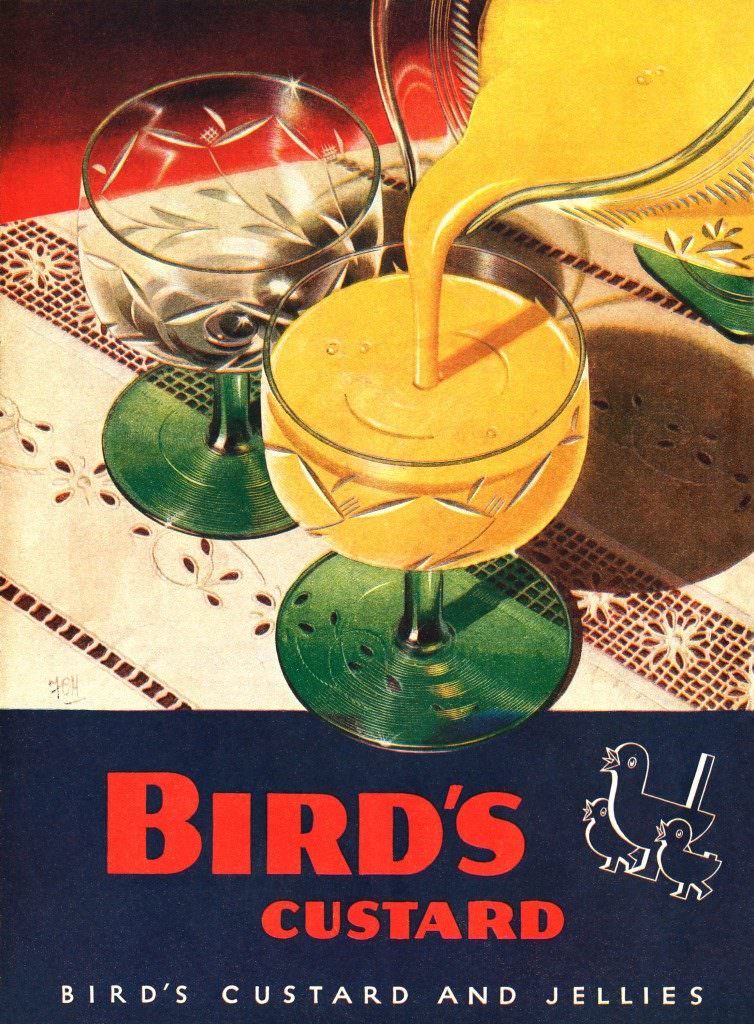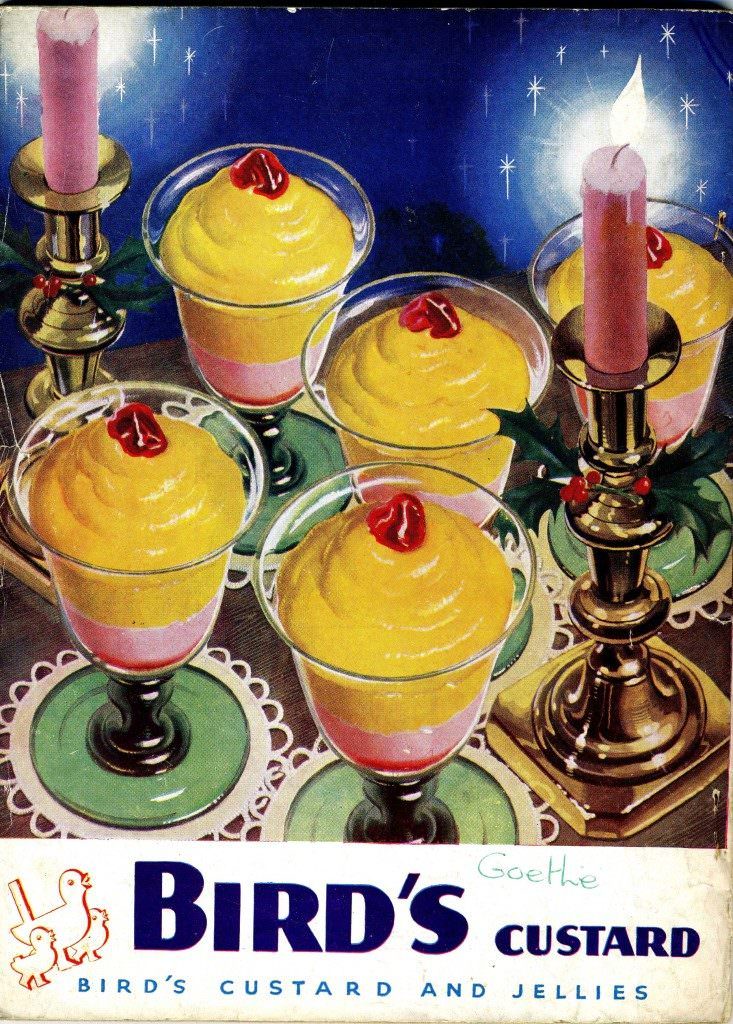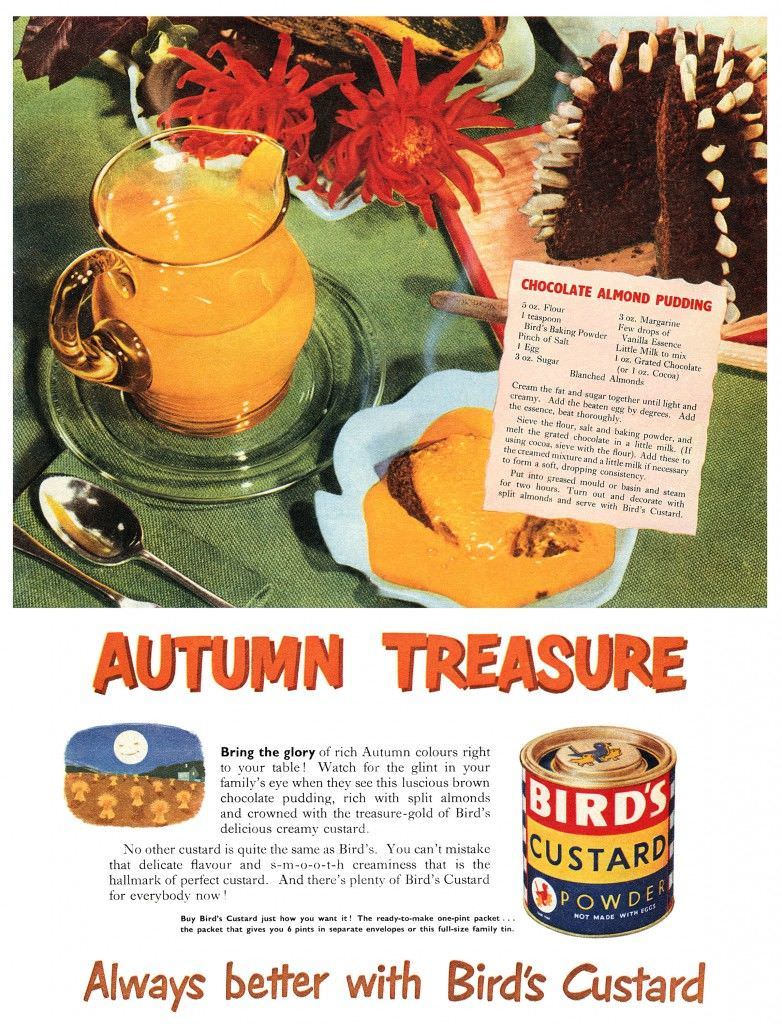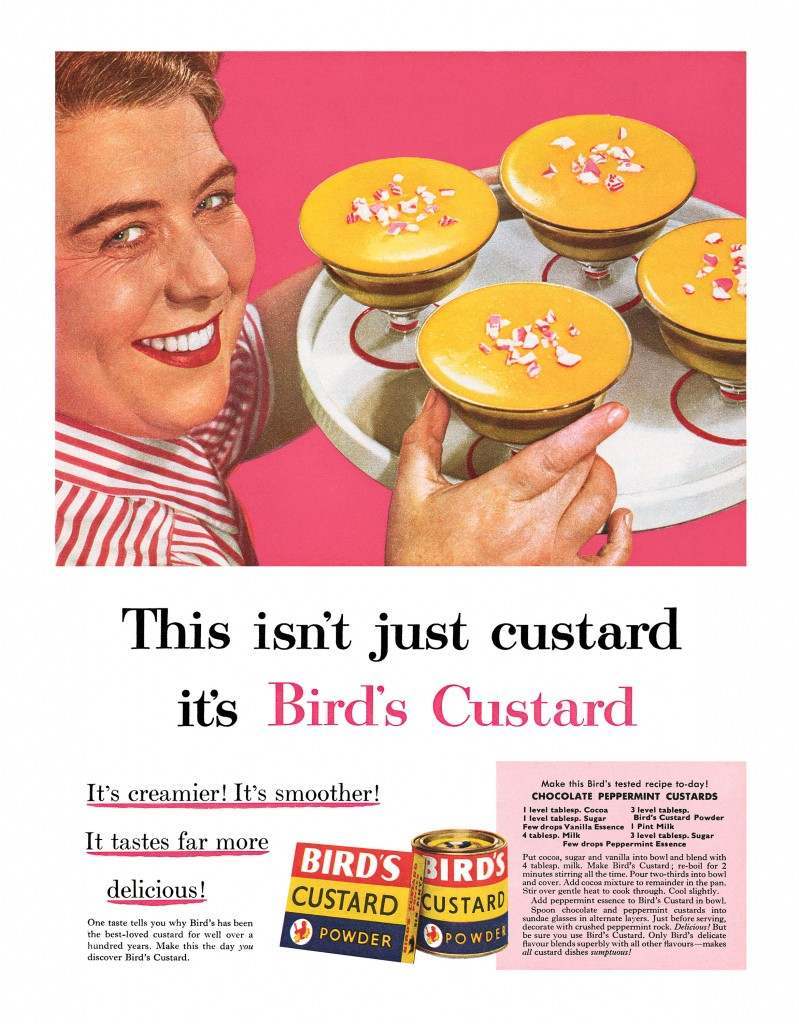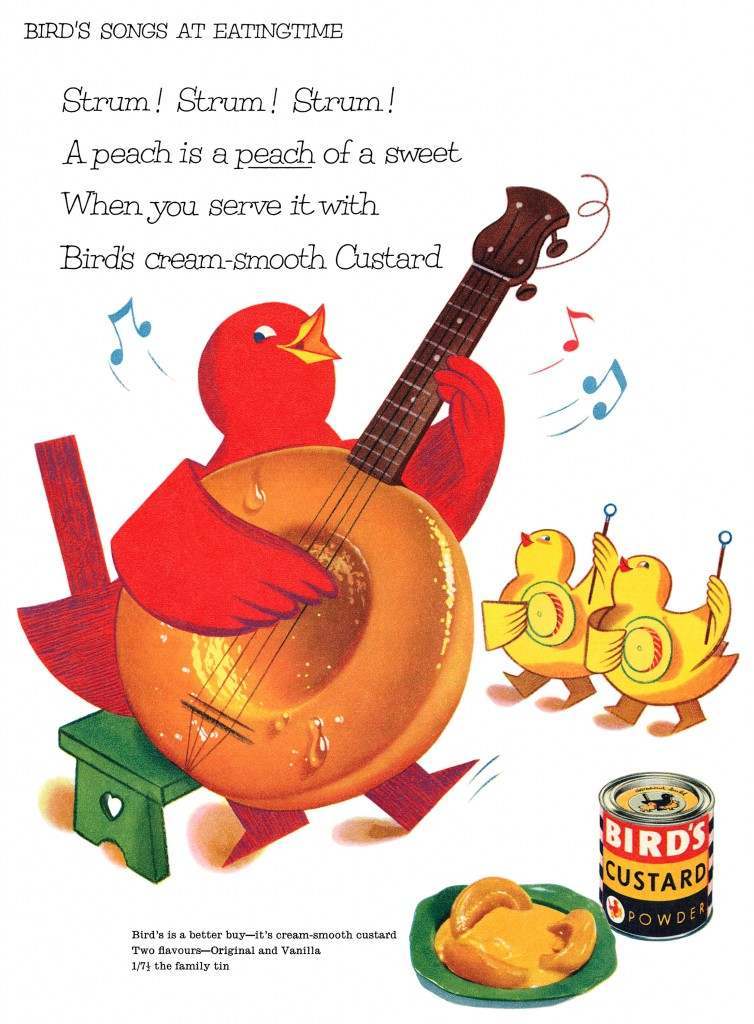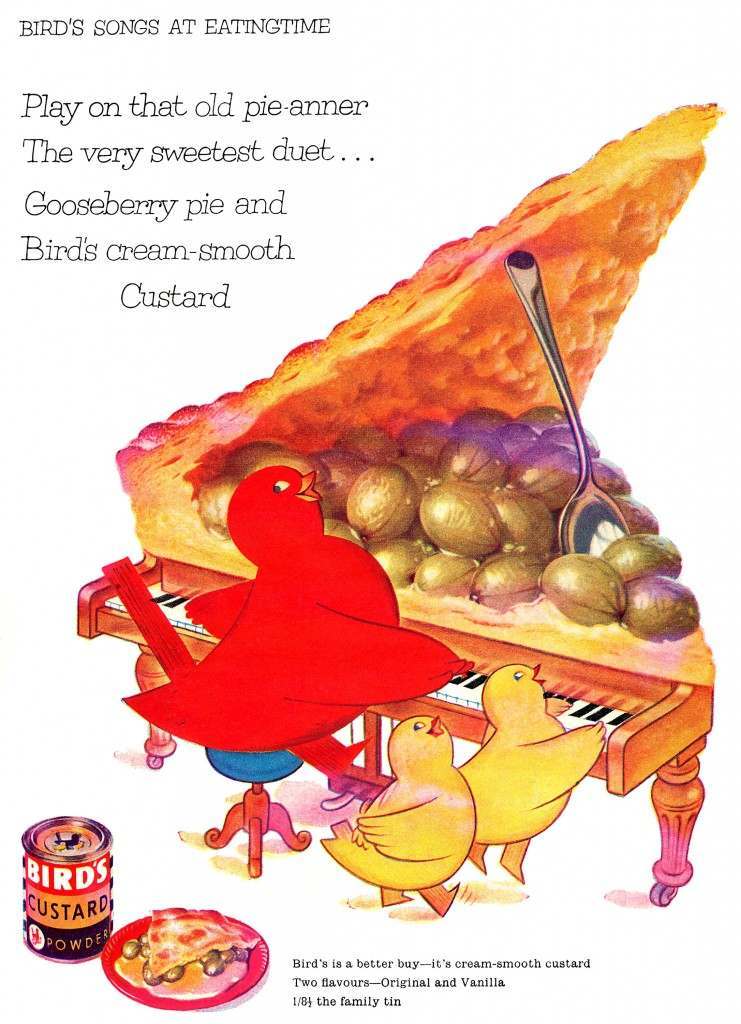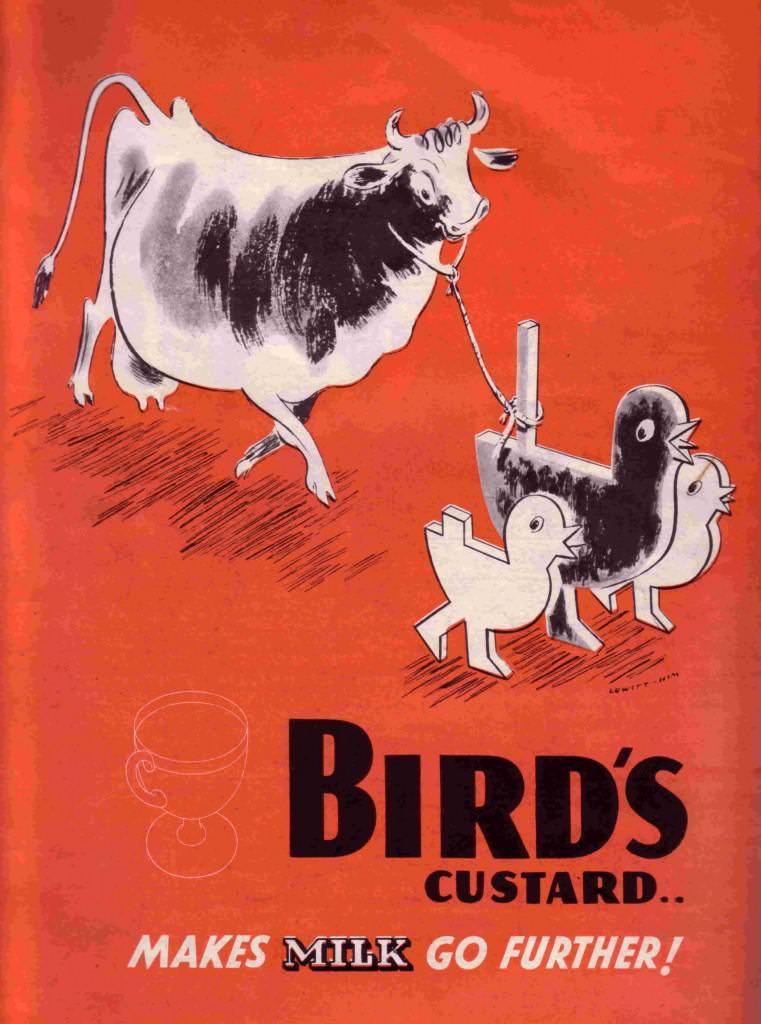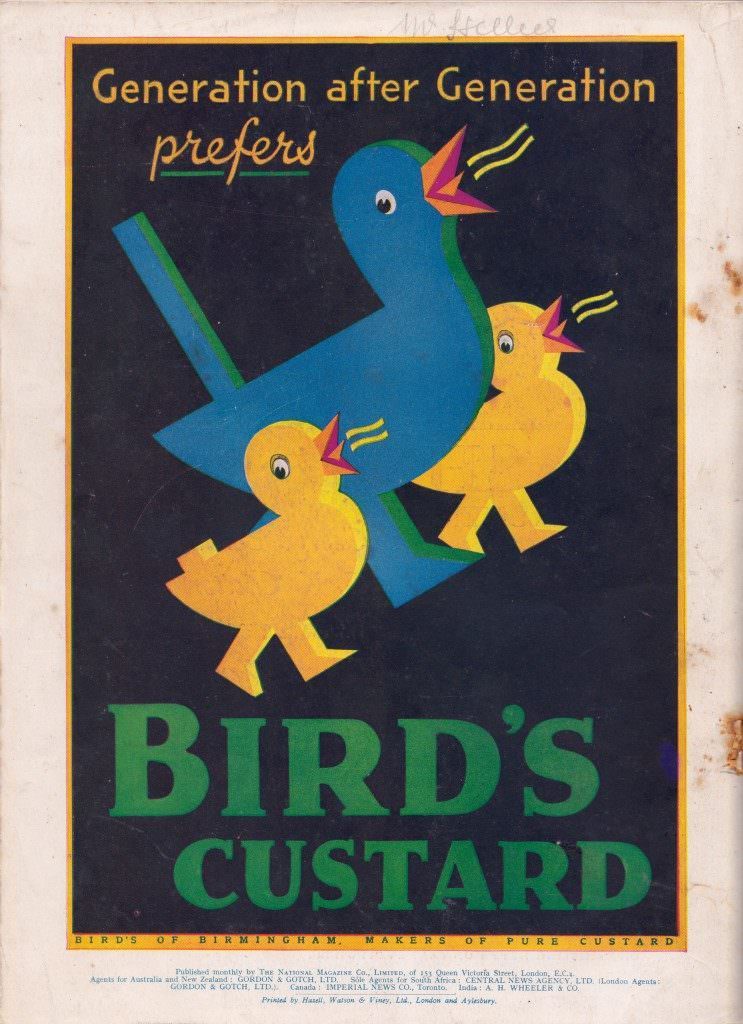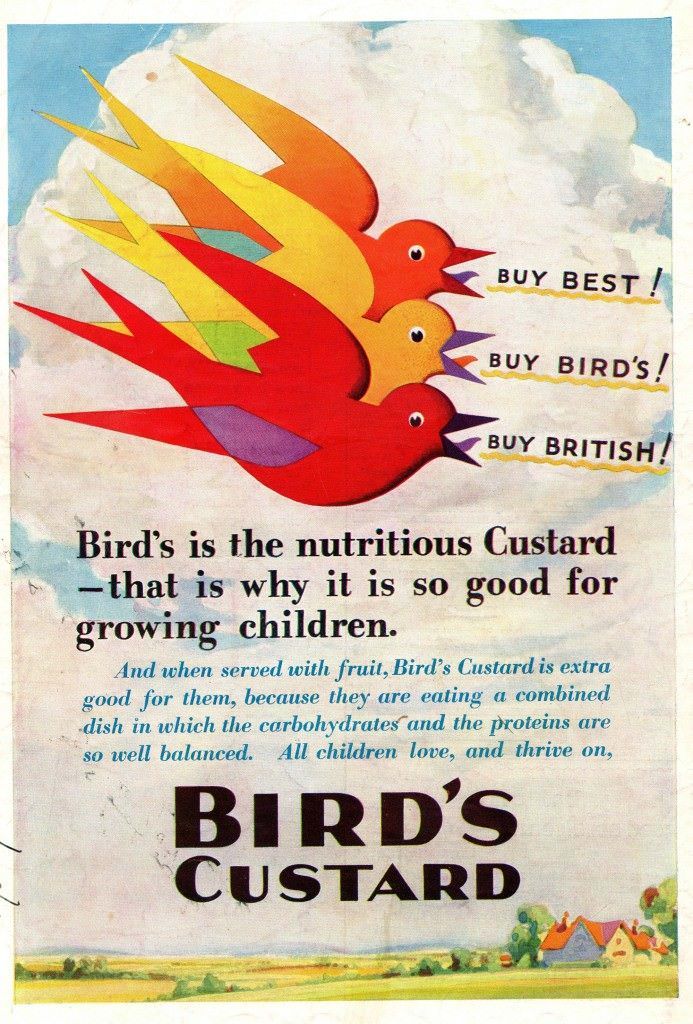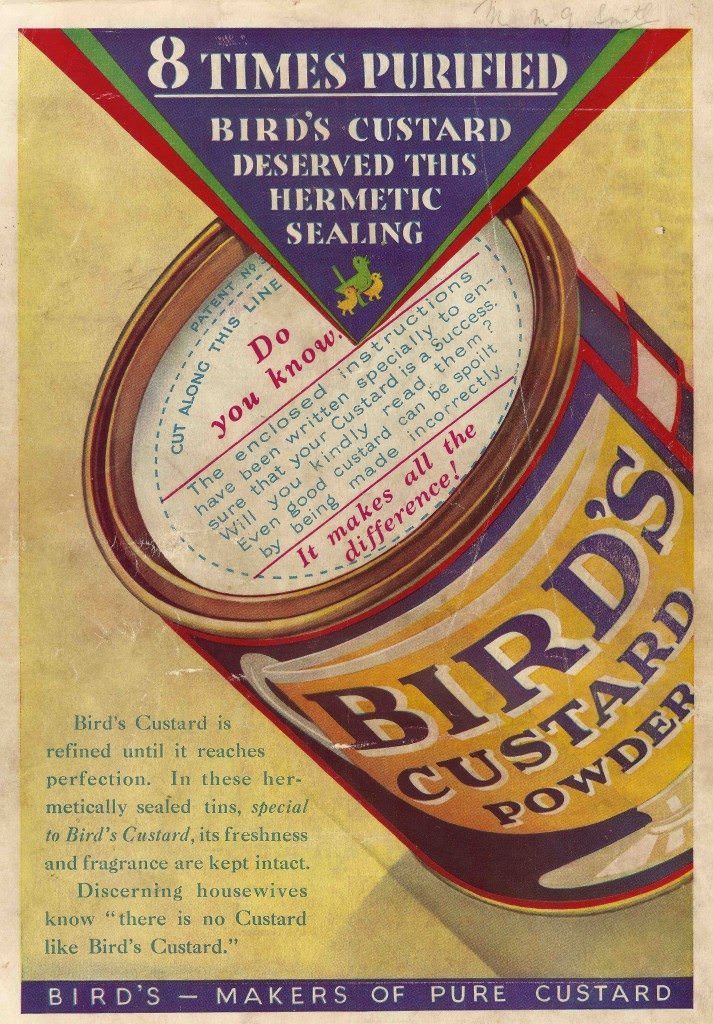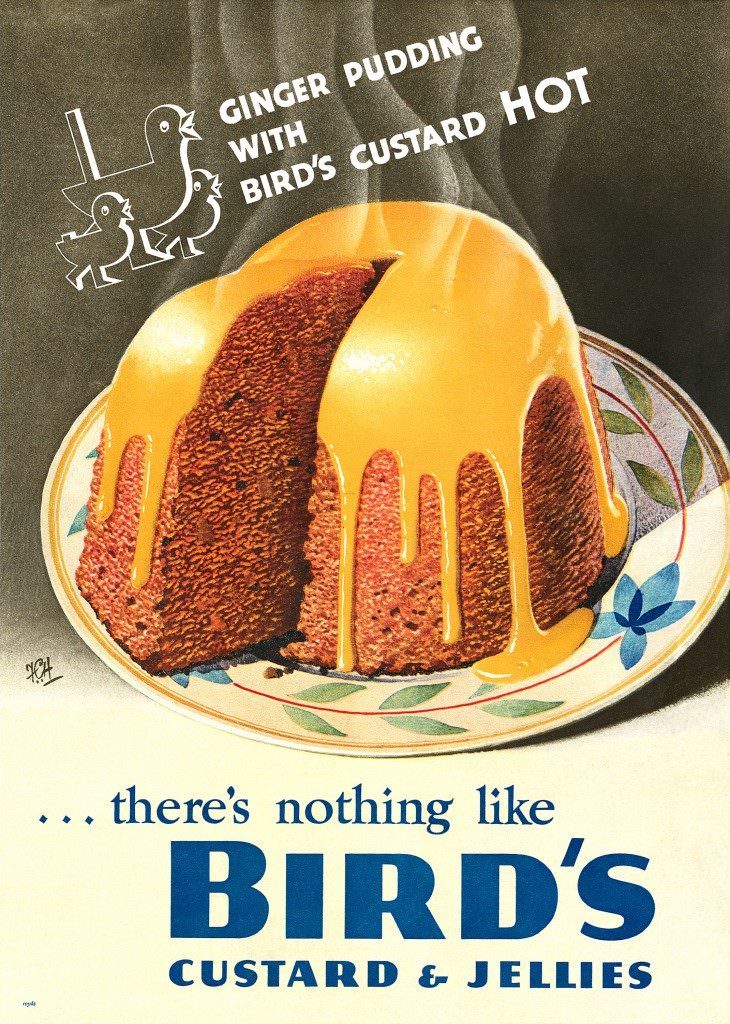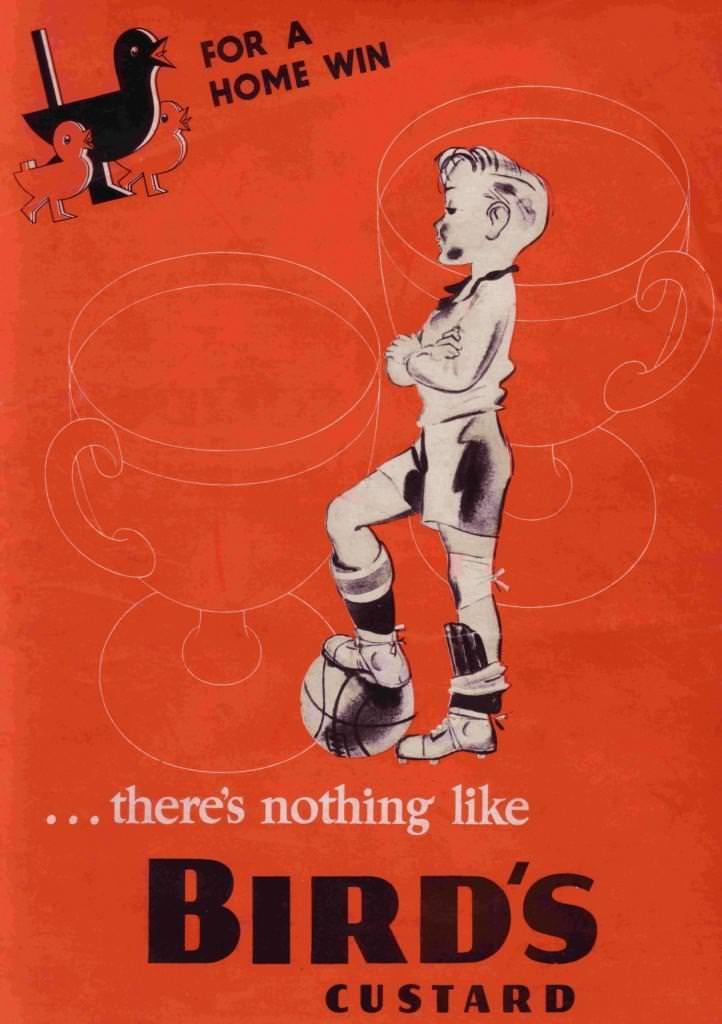Bird’s Custard ads have been part of British culture for well over a century. The product itself dates back to 1837, but the company’s push into advertising made it a household name. The ads tell a story of clever marketing, national pride, and changing times.
In the earliest days, Bird’s Custard didn’t need flashy posters or slogans. The product’s popularity grew by word of mouth, especially after Alfred Bird’s clever egg-free formula became a hit at home and in restaurants. But as competition increased, advertising became essential.
By the late 1800s, printed ads for Bird’s Custard began to appear in newspapers and magazines. These early ads were simple. Most showed the bright yellow custard in a bowl, sometimes topped with fruit or pie.
The 1920s brought a new wave of marketing. In 1929, the company introduced the “three bird” logo. This cheerful design became one of the most recognized symbols in British food advertising
Posters from the 1930s showed a mix of realism and bright colors. Many included a smiling mother serving custard to happy children, driving home the message that Bird’s Custard was a trusted part of home life. These ads often used short, catchy slogans. One popular line was “Don’t forget the Bird’s!”—a phrase that stuck in many people’s minds.
During World War II, Bird’s Custard faced major production cuts due to food rationing. Sugar shortages hit the brand hard. Despite this, the ads didn’t stop. Posters and leaflets reminded people of the custard they loved and promised it would be back in full swing after the war. This kept the brand alive in people’s minds during tough times.
Print ads from the same period leaned into bold design. Full-page spreads showed shining bowls of custard next to cakes and crumbles, making the dessert look irresistible. Recipes were often included, showing how to pair Bird’s Custard with different puddings.


